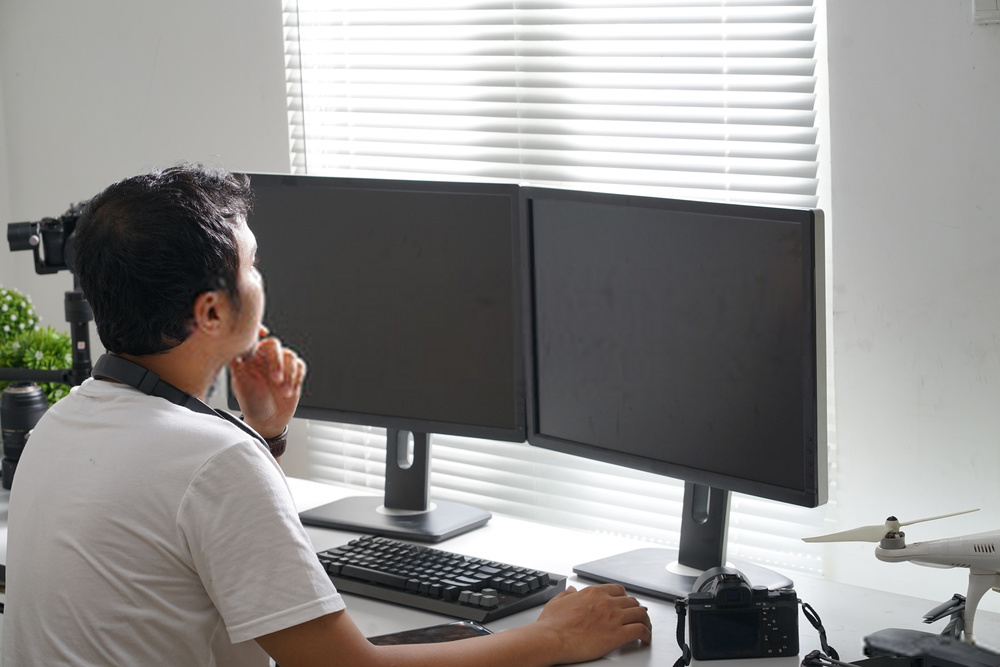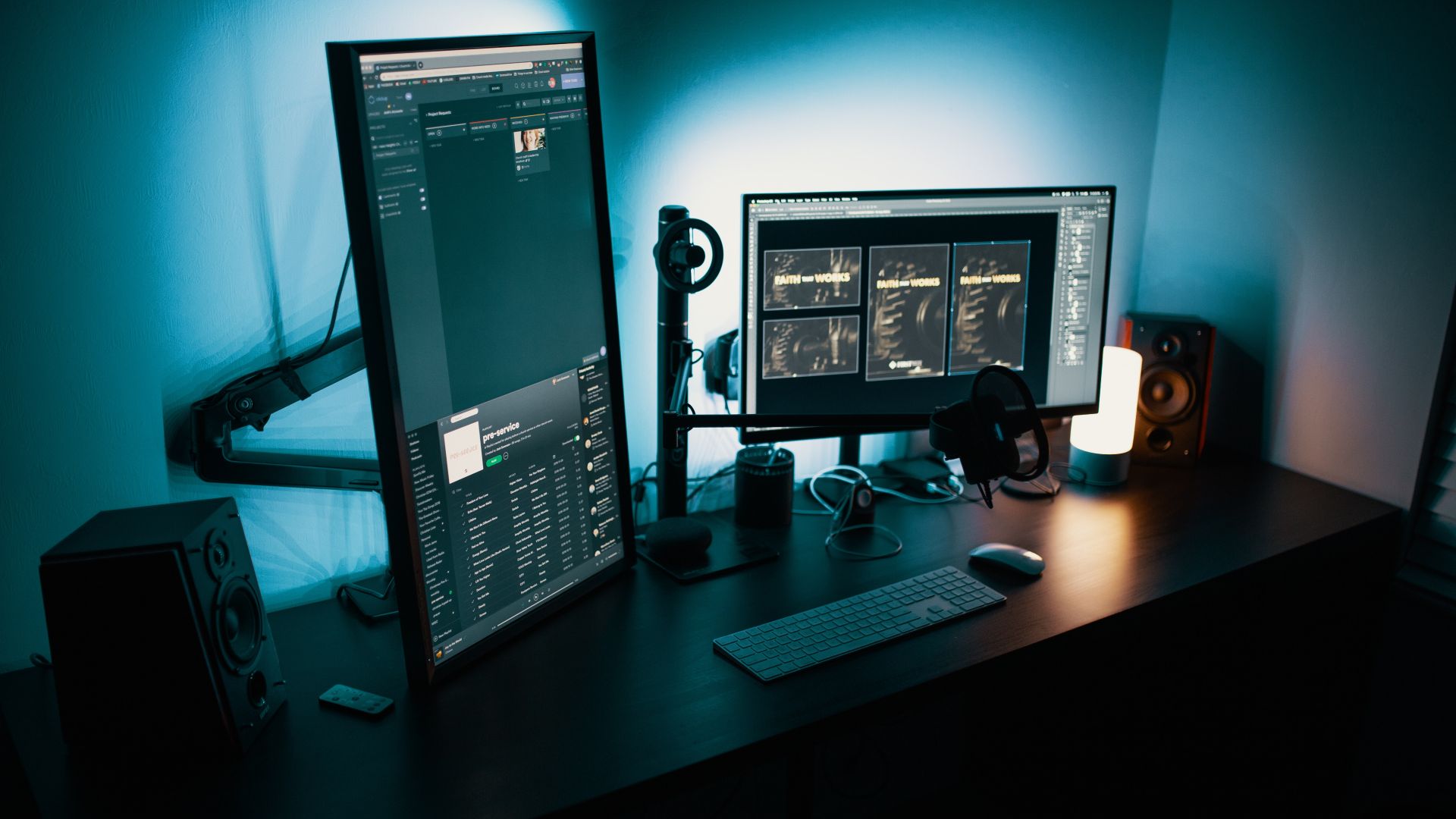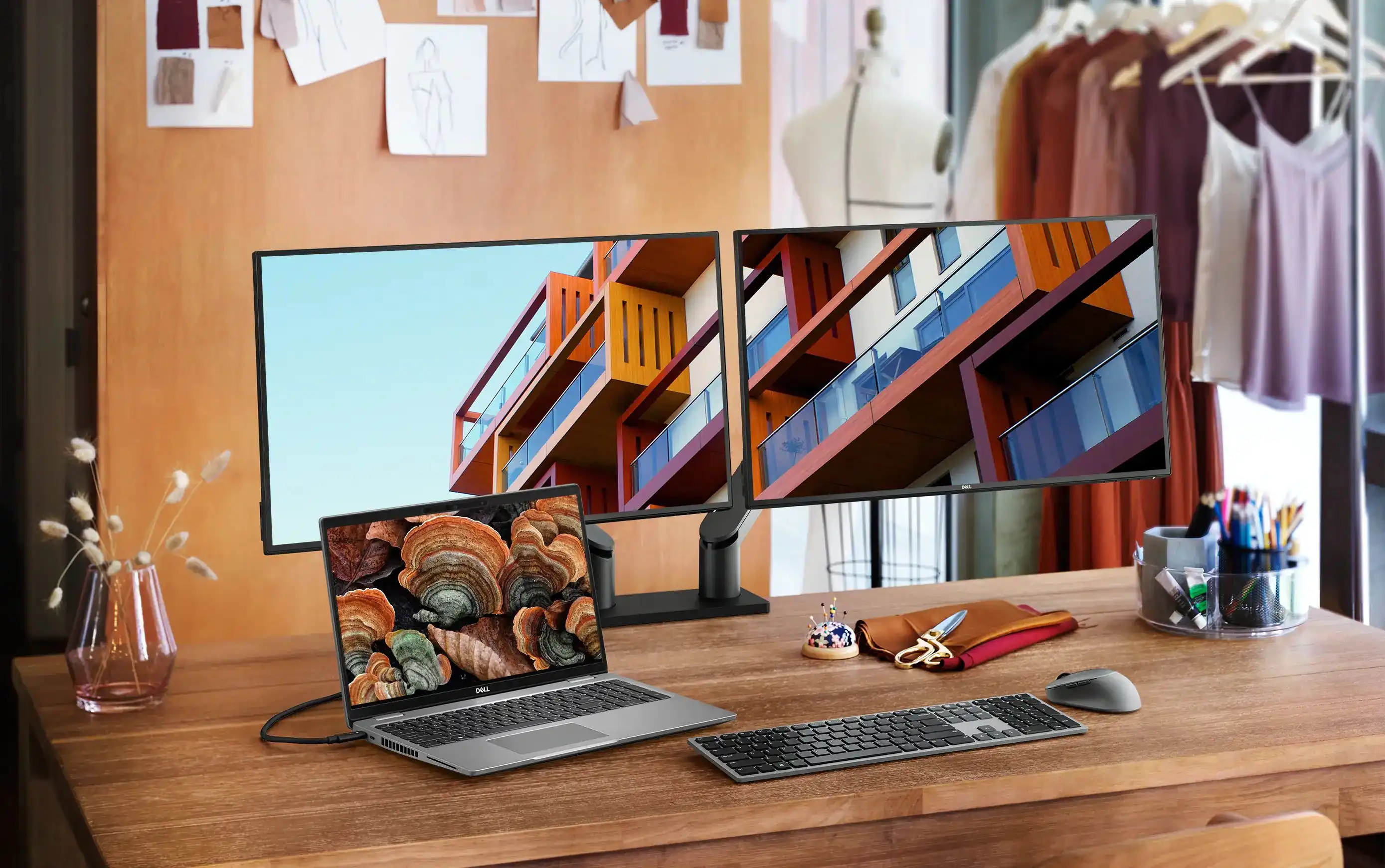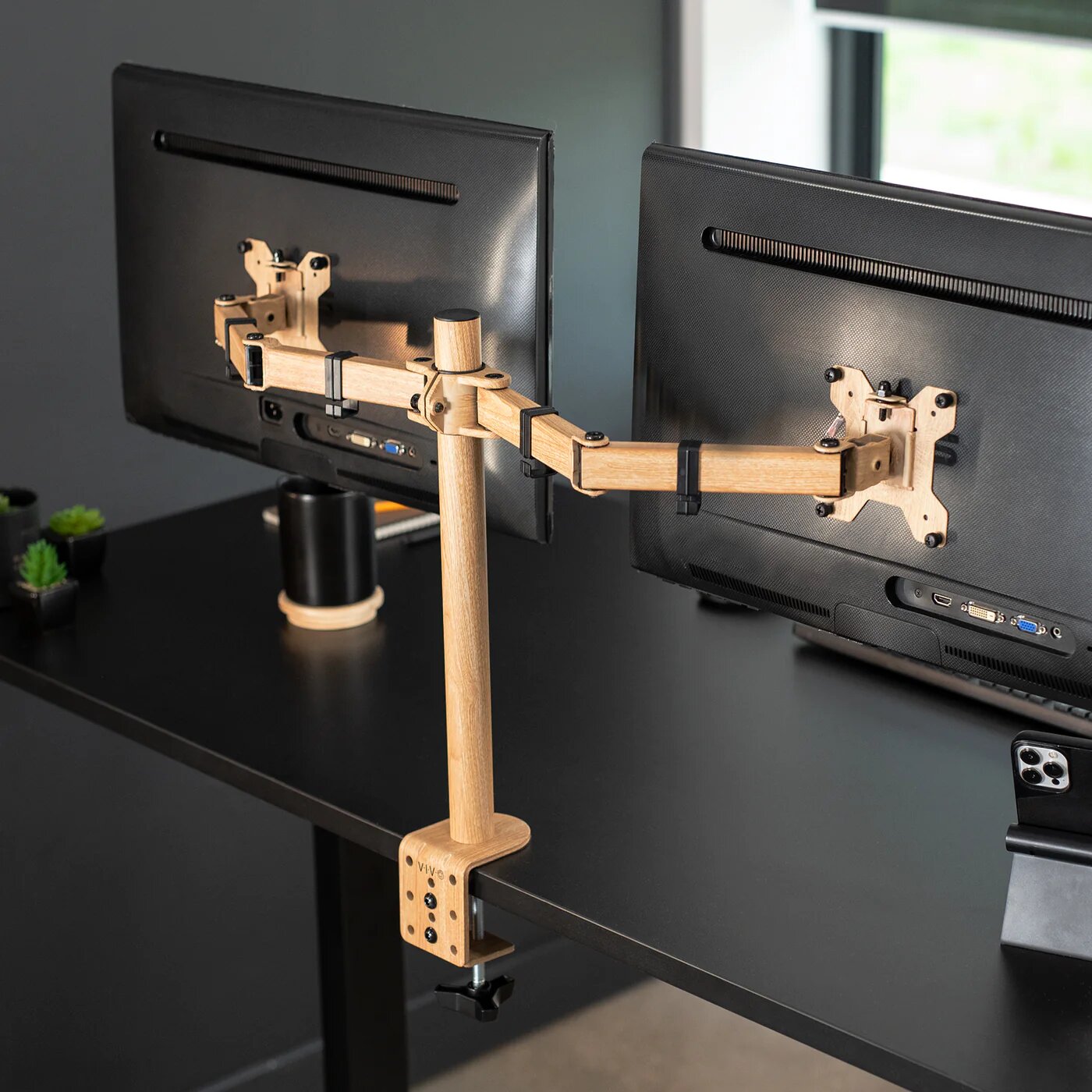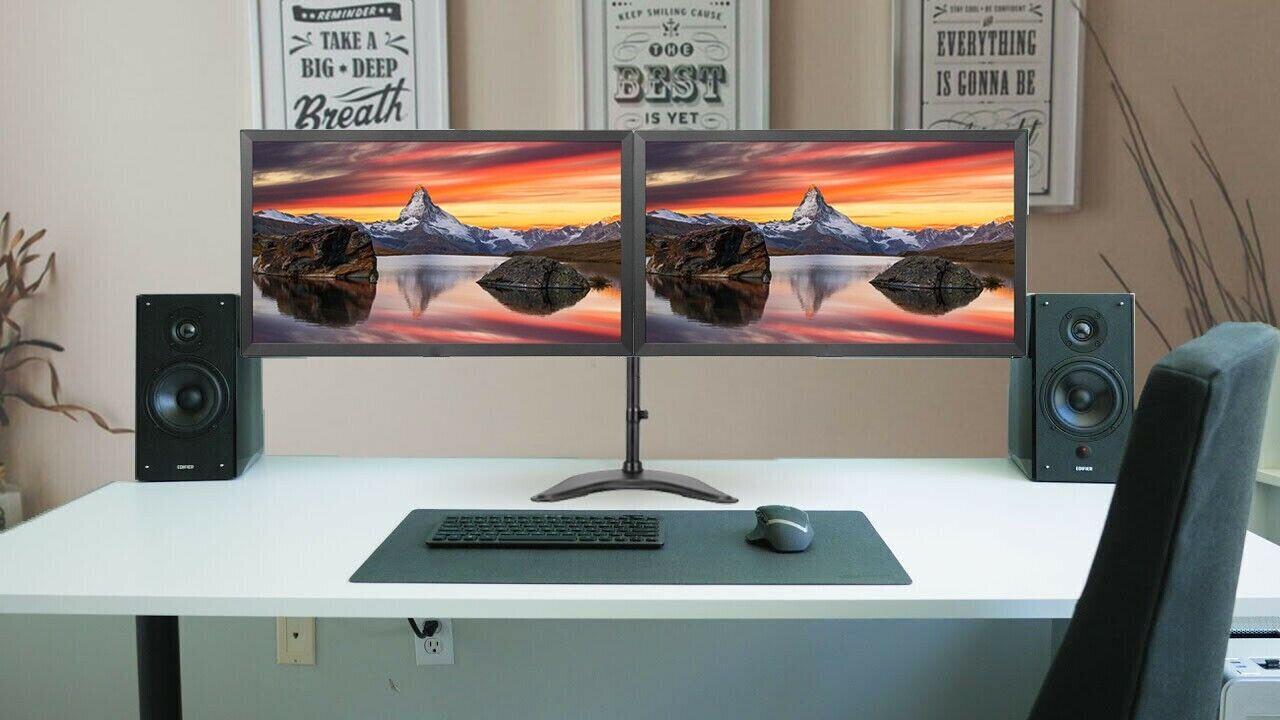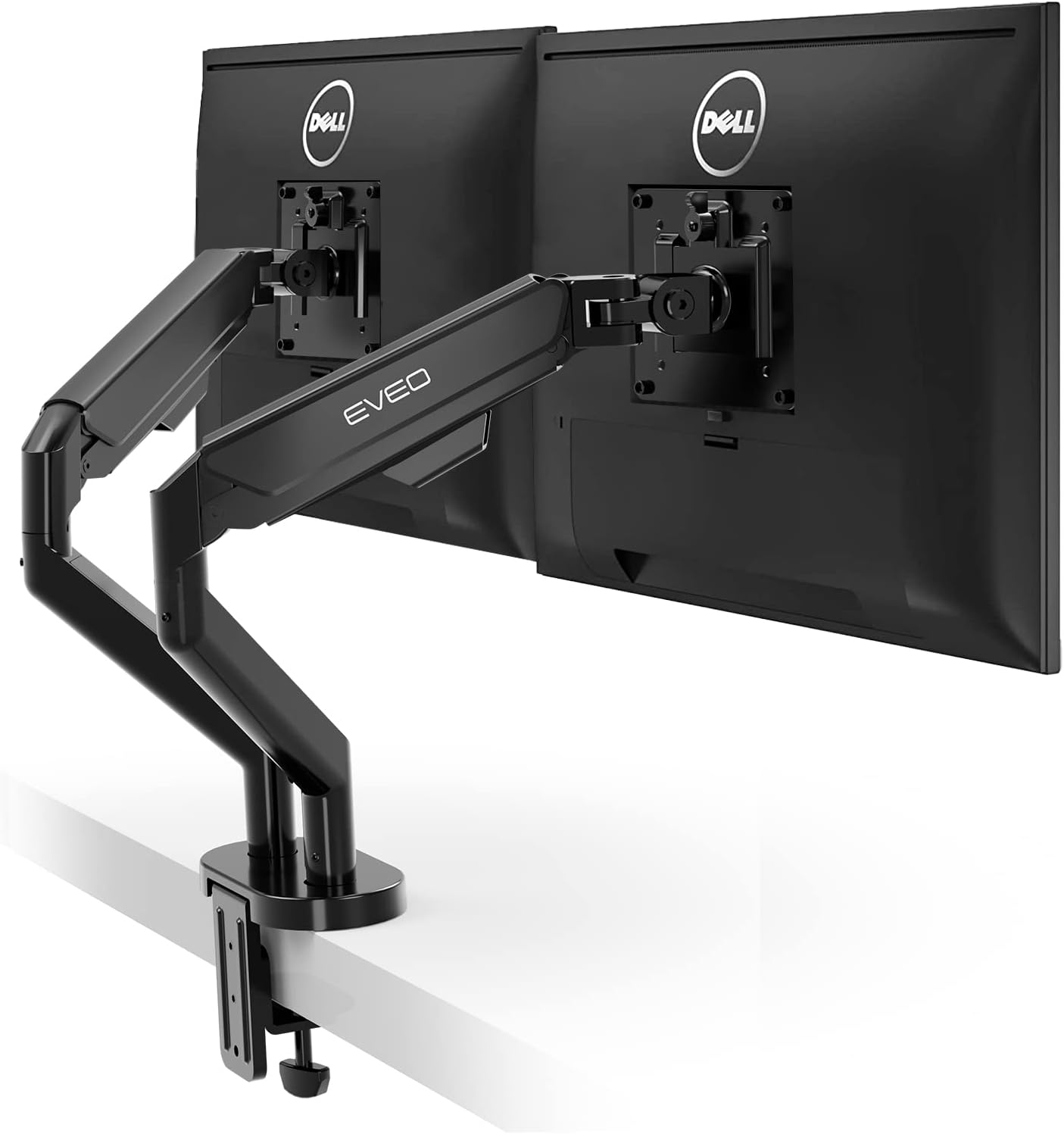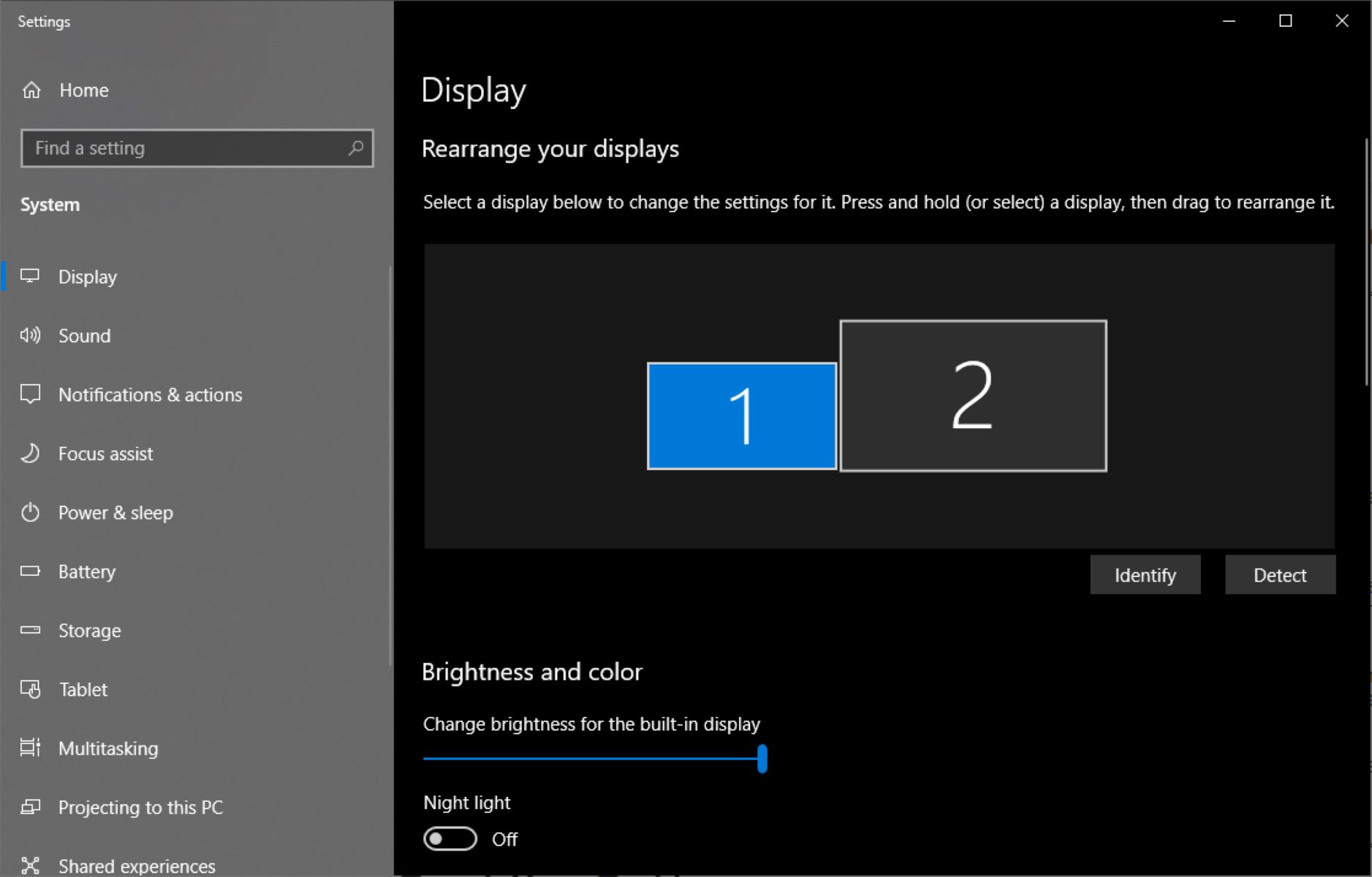Working from home (WFH) has become the new default as an effect of COVID-19, and it is thus imperative that you have the right equipment to set up a conducive environment for productive work. Paying attention to ergonomics is important to prevent strains and injuries, as is setting up more than one monitor to help you complete more tasks efficiently. In this guide, we’ll show you how to set up dual monitors to improve your work productivity even while you’re in the comfort of your home.
Prerequisites: Things to Consider
Find the Ideal Position of Your Dual Monitors
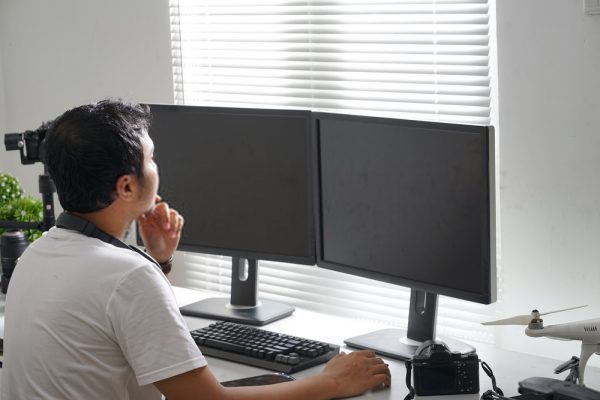

Your dual monitors should be properly aligned and positioned regardless of where you move around your desk. It is thus crucial for you to always be directly facing the current monitor’s screen. Although having dual monitors arranged side by side with the touching edges located in the center of your workstation is common, it’s not the safest method.
The result? It will require constant twisting and turning your head while your hands remain in alignment with your keyboard. With prolonged working hours, it will eventually have a negative impact on your neck. This creates the perfect recipe for neck pain and tender shoulders. To resolve the problem, evaluate how often you’ll use each monitor:
Having a Primary Monitor Usage Setup
If you have a primary monitor, it should be directly facing you, in alignment with your mouse and keyboard. To put things into perspective, this is similar to your traditional single monitor setup. Having a second monitor placed at a 90° angle to your left is not ideal. So, keep it close to the primary monitor’s location.
Having Equal Monitor Usage Setup
This may be challenging, as you can’t easily focus on one specific monitor. Therefore, make sure you can align your body with both monitors.
For a specific standing or sitting position, for instance, ensure that both monitors face you; hence, each monitor must surround you. Your workstation can also benefit from every manifestation of flexibility, such as a comfortable twistable keyboard.
Determine Which Side Is Suitable for Your Second Monitor
To reiterate, you should set up your dual monitors as close to each other as possible to reduce the strain on your neck and shoulders. A few considerations will also be determined, such as the location of your second monitor either on the top, bottom, left, or right.
Although it’s possible to place one monitor on top of the other using a wall mount or monitor desk mount, it’s not 100% effortless. Aside from that, not all monitors are compatible with support mounts.
Here’s what to avoid:
- Putting a second monitor below: This is not ideal; however, it’s preferable compared to the second option below. This position will trigger more neck movement which results in neck aches.
- Putting a second monitor above: This must be avoided at all costs if you have the means. However, it is considerable when you rarely look at its screen.
Arrangement of Horizontal and Vertical Monitors
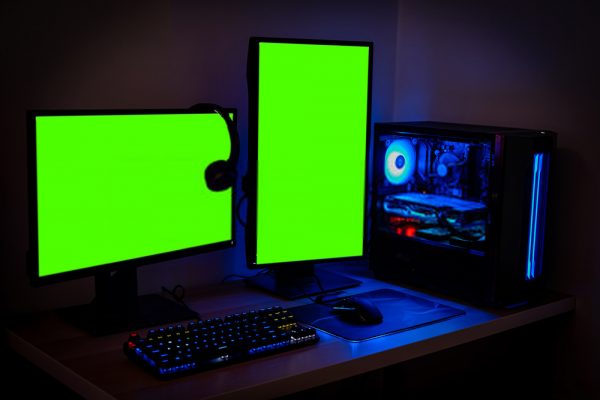

If you’re tired of the traditional monitor arrangement, you can always opt for a simple and high-quality monitor mount. While this depends on whether you have the means and space for dual monitors, you can always have a workaround with both. For example, having one vertical and one horizontal monitor does all the magic. You can also have two vertical monitors, place them side by side and have a big square in front of you.
Find the Best Location in the Room
The next prerequisite to consider is location. Essential factors such as available space, lighting, windows, and accessibility will come into play. In a nutshell, it is where interior design and getting creative will take place.
Protect Your Eyes From Excessive Glare
Glare is another factor that you shouldn’t disregard. Too much glare will hurt your eyes and lessen readability. Alternatively, you can turn up the brightness level, thus consuming a significant amount of electricity.
Although putting blinds/curtains will serve as a workaround, it’s not a long-term solution. After all, you don’t want to appear like you’re living in a bat cave.
To remediate, rearranging your desk to place your workstation to have minimal glare will do. As an example, you can position your screen at a suitable angle to the window. Hence, you can benefit from the view outside by setting up your dual monitors away from the window.
Identify the Appropriate Levels of Brightness
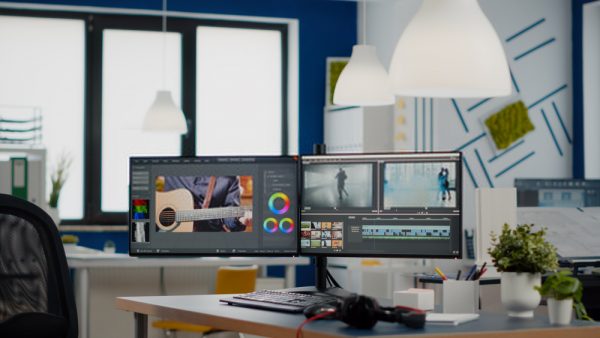

You can also adjust the level of brightness. However, some people won’t apply the same rule in a dark, poorly lit room.
The monitor’s LED doesn’t have the same quality compared to natural lighting. As a result, you are more prone to eye fatigue after prolonged working hours. To remediate imbalanced brightness levels, do the following:
- Make sure ample lighting is distributed within your workstation and room.
- Decrease the level of brightness of your monitors.
You can also purchase quality monitors integrated with light sensors with automatic color temperature and screen brightness adjustments. Although it is an expensive investment, it’s worth it for a healthy vision. In addition, anti-blue light glasses also do the job of protecting your eyes during prolonged use of computers.
How to Set Up Dual Monitors
Now that we’ve provided a comprehensive list of prerequisites regarding the essentials, we will get to the main steps on how to set up dual monitors for your WFH setup.
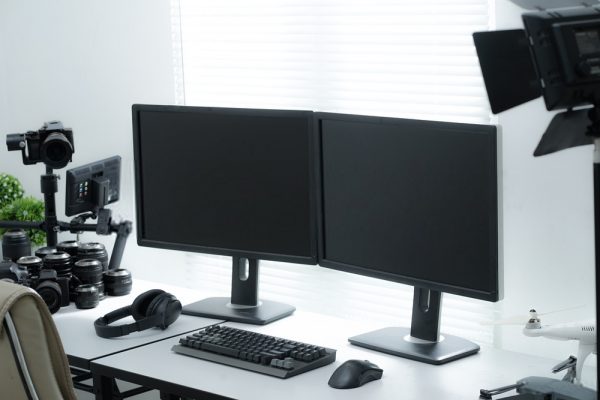

Determine the Arrangement and Positioning of Your Dual Monitors
When you opt for dual monitors, always remember to position your monitor’s top edge level with your eyes. This method also applies to single monitors. To reduce neck pains and shoulder strains, your position should eliminate the tilting of your head upwards. Depending on your comfortability, you can also position the top edge below your vision level.
Fortunately, numerous monitors feature height adjustments. If not, you can apply the following solutions:
- If the monitor is too low, there are many options you can experiment with to elevate your monitor. A stack of books or shoeboxes, for instance, can already do the trick.
- If the monitor is too high, invest in a desk mount. It’s not as permanent as a wall mount.
As a general rule, make sure that each monitor’s top edges are aligned at the same level.
Identify Dual Monitors’ Ideal Distance From Your Eyes
If you are a MacBook/iPad/iPhone user, you can visit the Is This Retina? DPI/PPI Display Calculator. Input the display resolution of your device and its diagonal size. After providing the details, you can see the aspect ratio, the PPI, and the ideal screen distance.
Of course, 30 inches away from your computer isn’t recommended. It can result in more harm than good to your vision. As a general rule, you should position your eyes an arm’s length away from your screens. Although the higher DPI the better it is for your vision’s health, it’s also crucial to increase the font sizes and other components in the interface of your desktop or laptop.
Evaluate Distance Between You and Dual Monitors
Many people often arrange their dual monitors parallel to each other, forming an expansive banner-like monitor. Although this arrangement is typically used, it’s not ideal. Eventually, you can’t view the far corners of each monitor properly which makes it ergonomically wrong and uncomfortable.
Instead, you can set up your dual monitors around your body. As a result, you can directly face every monitor without too much tilting of your head. To picture out, if you can set up more than two monitors, the monitors and your workstation are circular. With you at the center, it’s easier and more convenient for you to move around, working things on every monitor.
Find the Best Ergonomic Tilt Angle
As mentioned, avoid arranging your monitors edge-to-edge to prevent neck pains. Hence, the appropriate arrangement is to position the monitor directly towards your eyes. The center should intercept the position between your eyes. As a result, opposing edges can be significantly convenient and more ergonomic.
Although you can set up your dual monitors around you, it’s not advisable to line up the edges. For many people, the wider separation between the monitors is an advantage for some people. Hence, it’s aesthetically unpleasant to have a gap between monitors.
At the end of the day, it boils down to the user’s preferences on how they set up dual monitors for remote working. Regardless of your setup, always prioritize productivity, functionality, and practicality.
Takeaway
That’s a wrap! We have covered everything you need to know and consider on how to set up dual monitors properly for your remote work setup. Many of these recommendations are also applicable for a single monitor setup.
However, the key takeaway is that ultimately your dual monitor setup will depend on your preferences, budget, and capacity. The type of accessories, monitors, chairs, and location must suit your current finances and style.
With this in mind, we’d also like to know in the comments your ideal dual-monitor setup?
Happy remote working, the ergonomic way!







